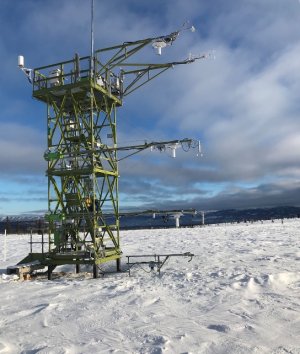NEON infrastructure now available for research
October 28, 2016
Did you know that in addition to free data, the National Ecological Observatory Network (NEON) also provides access to its infrastructure for research? For example, you can now request access to specific field sampling locations or potentially mount your own sensor at a NEON field site. We are excited to announce the Assignable Assets program. This program includes access to four key types of NEON Infrastructure:
- Mobile Deployment Platforms (MDPs) by request
- Access to Sensor Infrastructure (SI) at field sites
- Access to Observational Sampling Infrastructure (OSI) at field sites
- Airborne Observation Platform (AOP) by request
Please note that access to NEON field sites is governed by site host policies and permitting requirements. The properties on which NEON infrastructure and observational plots are located are owned by site hosts. Our rights of access and use are defined in formal Land Use Agreements with these landowners and site hosts. Researchers must obtain their own site host permits for their research.
What exactly are these Assignable Assets?
The Mobile Deployment Platform (MDP) is a self-contained suite of sensors, power systems and data logging capabilities for capturing atmospheric, soil, and aquatic based measurements. Central to the concept of the MDP is the ability for rapid deployment to capture stochastic ecological events (e.g. fires, flood events, pest outbreaks) across the landscape. Five MDPs will be available for deployments up to 1 year.
Sensor Infrastructure (SI): At each of NEON’s core and relocatable field sites, there are several distinct physical instrument systems or arrays for collecting environmental data from automated sensors:
- An instrument tower for meteorological and eddy flux measurements
- An array of soil instruments near the tower
- Sensors placed along or in stream or river; or on a buoy in a lake and in the adjacent riparian areas
- A small hut that serves various functions including housing instrumentation used for command and control of the sensor infrastructure; and housing of the gas measurement validation system.
Requests may be made through the Assignable Assets program to install additional sensors or instruments on any of these systems or structures.
Observational Sampling Infrastructure (OSI): Researchers may request access to sampling locations at NEON field sites or fresh biological samples before they are archived. As stated above, gaining access to and sampling on NEON observational plots must also be permitted by the landowner and be managed with extreme care so as to not compromise NEON measurements or samples.
To that end, only nondestructive sampling will be permitted and only if it does not negatively impact the integrity of NEON observations.
The Airborne Observation Platform (AOP) is a suite of remote sensing instruments mounted in a Twin Otter airplane for collecting airborne data. The sensor suite consists of a spectroscopic imager operating from 380-nm to 2500-nm, a waveform Lidar, and a high-resolution Digital Camera. The AOP is the only Assignable Asset not yet available for requests. We anticipate the AOP will become available for request in fall 2018.
The details
Researchers must follow a formal process to request Assignable Assets. At this time, requests may be made for MDP, SI and OSI assets.
Standard requests may be made on a quarterly schedule. Ad hoc standard requests outside of this quarterly cycle may be considered, but should be submitted at least 2-3 months prior to the relevant research proposal deadline to ensure adequate time for a feasibility evaluation.
Target of Opportunity requests in response to unexpected events such as might result from a natural or man-made disaster will be handled on an expedited basis

